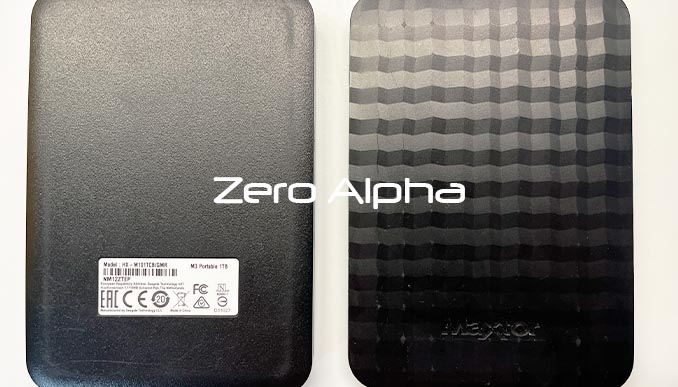Maxtor M3 Portable Data Recovery
The Maxtor M3 Portable, a popular choice for external storage, is widely used for its portability, affordability, and substantial storage capacity. However, like any piece of hardware, it is not immune to problems, especially concerning data recovery. This article explores the common issues users may face when attempting to recover data from a Maxtor M3 Portable drive and sheds light on the potential challenges associated with these problems.

1. Physical Damage
Physical damage is a prevalent issue with portable drives like the Maxtor M3. Due to its compact and portable nature, it is often subject to drops, impacts, and other physical mishaps. Physical damage can manifest in various forms, including:
- Damaged Connectors: Frequent plugging and unplugging can wear out the USB connectors, leading to poor connectivity and potential data access issues.
- Disk Surface Damage: Dropping the drive can cause internal components like the read/write heads to scratch the disk surface, resulting in data loss or corruption.
- Broken Enclosure: Cracked or broken casing may expose the internal components to dust and debris, causing further damage over time.
Data recovery from physically damaged drives often requires professional intervention, as it may necessitate opening the drive in a cleanroom environment to avoid further damage.
2. Firmware Failures
Firmware is crucial for the drive's operation, acting as an intermediary between the hardware and the operating system. Firmware issues can be particularly problematic because they are not always easy to diagnose and can cause the drive to become inaccessible. Common firmware problems include:
- Corrupted Firmware: Firmware corruption can render the drive unreadable by the operating system, making it appear as though the drive has failed entirely.
- Firmware Update Failures: Incomplete or incorrect firmware updates can cause the drive to malfunction, leading to data inaccessibility or loss.
Recovering data from a drive with firmware issues often requires specialized software tools or firmware reprogramming, both of which may be beyond the capability of typical users.
3. Mechanical Failures
Mechanical failures are another significant challenge with the Maxtor M3 Portable. These can occur due to the wear and tear of moving parts within the drive, leading to failures such as:
- Motor Failure: The motor responsible for spinning the platters can fail, preventing the drive from functioning altogether.
- Head Crash: The read/write head can collide with the disk platters, scratching them and potentially destroying any data in those areas.
- Spindle Bearing Failure: Bearings that facilitate the smooth spinning of the platters can wear out or seize, stopping the drive from operating correctly.
Mechanical failures often require disassembly and repair by professionals, making data recovery a complex and potentially expensive process.
4. Logical Failures
Logical failures refer to non-physical issues that affect the drive's data structure or file system. These can result from a variety of causes, such as:
- File System Corruption: Power failures, improper ejection, or malware can corrupt the file system, making data unreadable.
- Accidental Deletion: Users may accidentally delete important files or format the drive, leading to loss of data.
- Bad Sectors: Over time, drives can develop bad sectors, which are portions of the disk that are unreadable or damaged, leading to data loss.
While logical failures can sometimes be addressed using data recovery software, there is always a risk of overwriting the existing data, making professional data recovery services a safer option in many cases.
5. Overheating Issues
The compact design of the Maxtor M3 Portable can lead to overheating, especially during extended use or when the drive is kept in poorly ventilated areas. Overheating can cause:
- Thermal Throttling: To prevent damage, the drive may throttle its performance, leading to slow data access or transfer speeds.
- Component Damage: Prolonged exposure to high temperatures can degrade or damage internal components, potentially leading to data loss.
Preventing overheating by ensuring proper ventilation and avoiding prolonged use can help mitigate this issue, but once components are damaged, data recovery can be challenging.
6. Power Supply Issues
The Maxtor M3 Portable relies on a consistent power supply through its USB connection. Power issues can lead to:
- Power Surges: Sudden power surges can damage the drive's circuitry, making data recovery difficult.
- Insufficient Power: If the USB port does not provide enough power, the drive may not function correctly, leading to intermittent data access or potential data corruption.
Using a powered USB hub or ensuring a stable power source can help prevent these issues, but once the drive is damaged, professional recovery may be required.
Conclusion
Data recovery from a Maxtor M3 Portable drive can be fraught with challenges, ranging from physical damage to firmware and mechanical failures. Users facing data loss on these drives should be aware of the potential complications and consider seeking professional assistance to maximize their chances of successful recovery. Prevention, through careful handling and regular backups, remains the best strategy to avoid the headaches associated with data recovery on these portable devices.
Maxtor M3 Portable HX-M101TCB 1TB Data Recovery Case Log
09Jun24: This maxtor drive stopped working and contains a seagate slim smr hard drive. All data recovered.